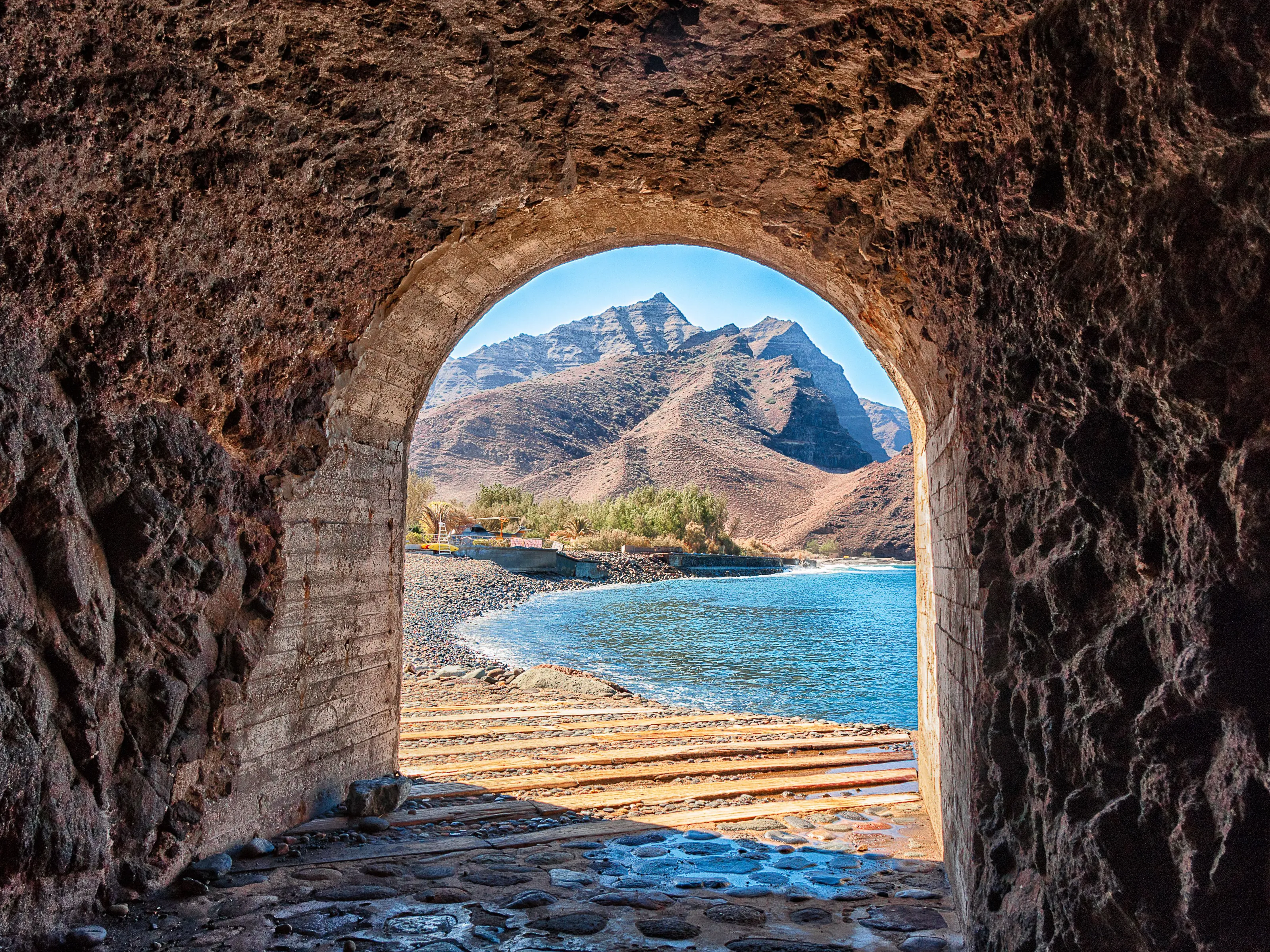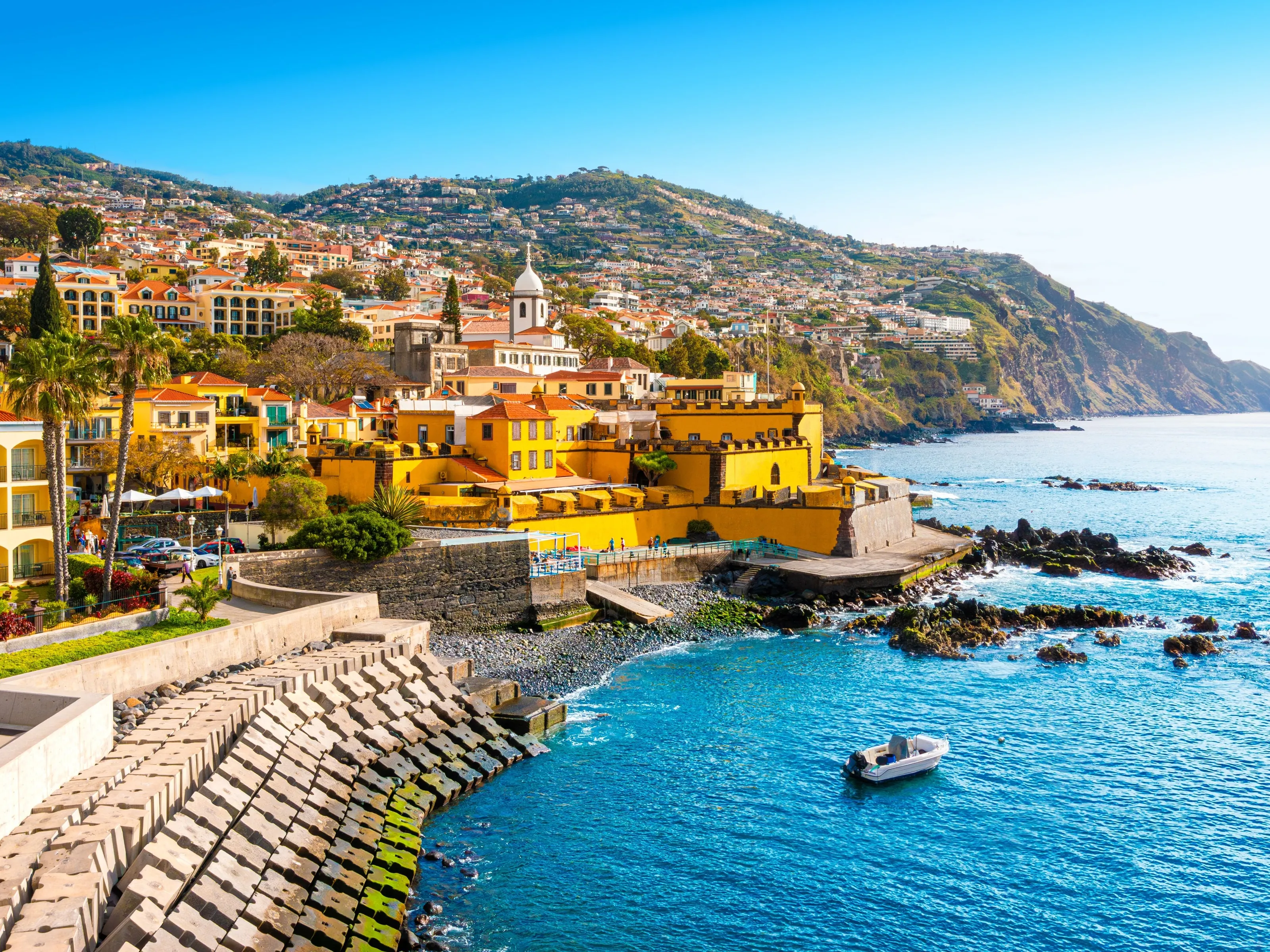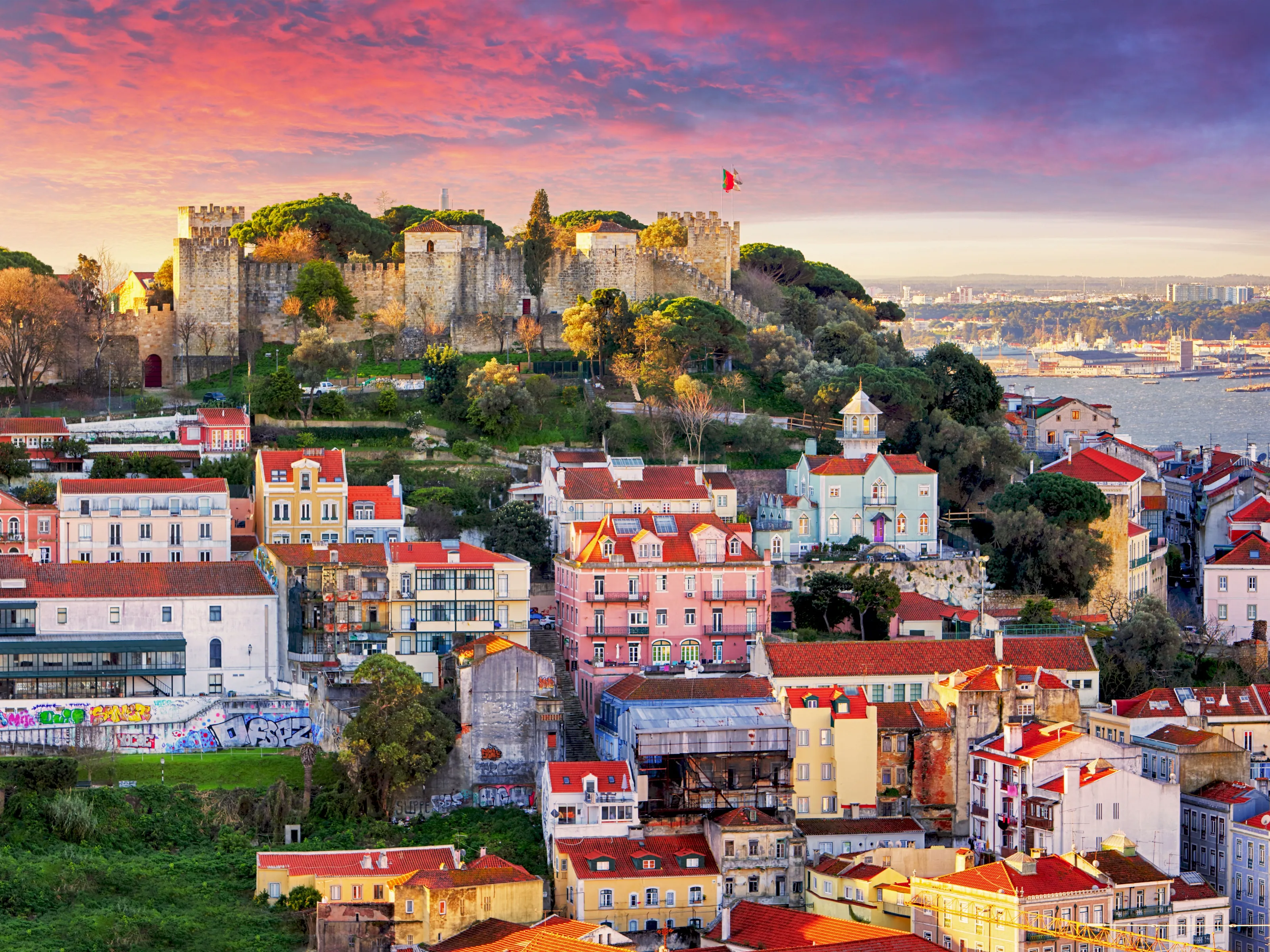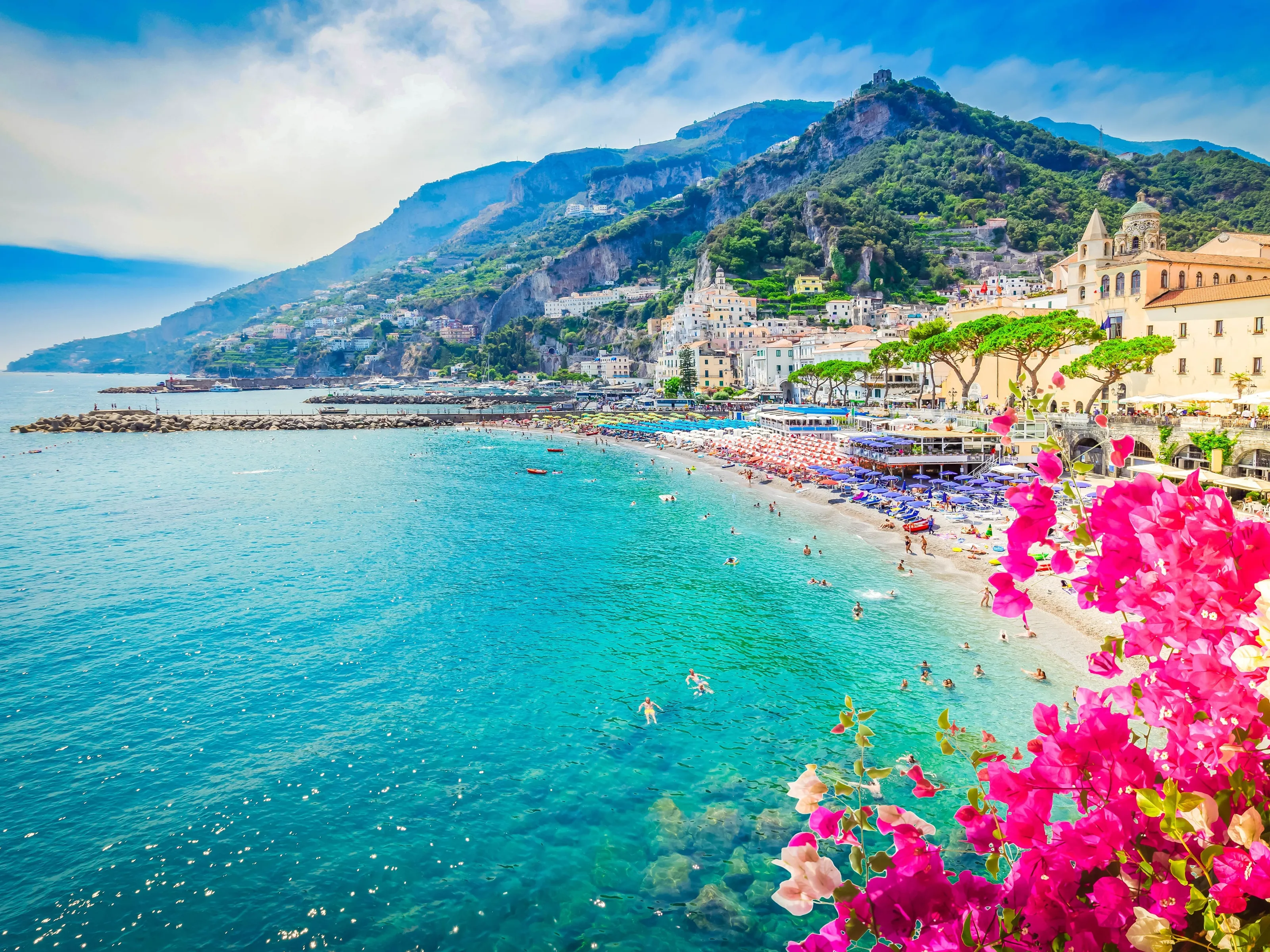Why Visit Tenerife?
Tenerife captivates as the Canary Islands' largest where Mount Teide's 3,718m volcanic cone dominates Spain's highest peak, black sand beaches contrast golden resort strips, and year-round spring temperatures (18-28°C) attract sun-seekers escaping European winters. This Atlantic island (pop. 950,000) delivers geographic diversity within 80km length—lunar landscapes in Teide National Park (UNESCO) where cable car (return tickets for non-residents from around $45; check volcanoteide.com for current prices) ascends to 3,555m for Above-the-clouds panoramas, lush Anaga Mountains' laurel forests in northeast, and dramatic Los Gigantes cliffs plunging 800m into ocean.
The southern resorts (Costa Adeje, Playa de las Américas, Los Cristianos) concentrate package tourism with water parks, golf courses, and British pubs, while northern Puerto de la Cruz preserves Canarian authenticity amid banana plantations. The final 163m to Teide's true summit (3,718m) requires a separate, free permit from Spain's National Parks service (via reservasparquesnacionales.es), booked online months in advance and strictly capacity-limited, though cable car station at 3,555m already delivers extraordinary views across Canary archipelago. Whale watching ($27–$54) encounters pilot whales and dolphins in Teno-Rasca strait between Tenerife and La Gomera.
Yet Tenerife surprises beyond beaches—La Laguna's UNESCO colonial town (15km from capital), Masca village's dramatic barranco gorge hike descending to sea, and Loro Parque's ($43) controversial orca shows attracting families. Food scene serves Canarian papas arrugadas, mojo sauces, and fresh fish, plus international cuisine catering to British and German tourists. Carnival (February) rivals Rio with Santa Cruz hosting Spain's biggest street party.
Day trips reach La Gomera island (ferry 50 min, $54 return) or drive complete island loop (scenic TF-5 and TF-1 highways). Visit year-round—eternal spring means 18-28°C daily any month, though December-February brings occasional rain to north. With direct year-round flights from Europe, family-friendly resorts, volcanic hiking, and affordable prices ($76–$140/day), Tenerife delivers Canary Islands' most varied destination—just choose north for authenticity or south for guaranteed sunshine and beach clubs.
What to Do
Natural Wonders
Mount Teide Cable Car & Summit
Spain's highest peak (3,718m) and its surrounding lunar landscape dominate Tenerife. Cable car (return tickets for non-residents from around $45; book weeks ahead at volcanoteide.com) climbs to 3,555m—already above the clouds with breathtaking views across the Canary archipelago. The final 163m to true summit requires a separate, free permit (book 3-6 months ahead via reservasparquesnacionales.es; strictly capacity-limited). Even without summit permit, cable car station offers spectacular panoramas and trails. Opening hours vary by season—check official site for current times.
Roques de García & Lunar Landscapes
Drive through Teide National Park's otherworldly terrain—rust-red volcanic rocks, sulfur-yellow formations, and twisted lava flows that feel like Mars. Roques de García rock formation offers easy 3.5km loop trail (1 hour) with views of iconic finger-shaped rock. Free access. Visit early morning or sunset for dramatic light and fewer crowds. Bring layers—it's cold at 2,000m altitude.
Star-Gazing at World's Best Sites
Teide is one of the world's premier stargazing locations—minimal light pollution, high altitude, and clear skies 300+ days/year. Join night tours ($54–$86) with telescopes and expert guides, or drive up yourself (free). Best viewing from Mirador de las Minas or cable car base. Milky Way visible with naked eye. Full moon dates offer lunar rainbows.
Coastal Highlights
Los Gigantes Cliffs
Dramatic 800m cliffs plunge vertically into the Atlantic on Tenerife's west coast—among Europe's highest sea cliffs. View from Marina del Gigantes or take boat tour ($27–$43) to appreciate their full scale. Sunset here is magical. The tiny black sand beach below offers swimming. Nearby Masca village provides stunning mountain gorge hikes (3 hours down to sea, boat pickup arranged).
Whale & Dolphin Watching
Tenerife's southwest coast is a marine mammal hotspot—resident pilot whales, dolphins, and occasional orcas. Join responsible boat tours ($27–$54 2-3 hours) from Puerto Colón, Costa Adeje, or Los Gigantes. Best success rate mornings. Choose operators with Blue Boat flag certification (respect wildlife). Year-round activity—whales don't migrate from these waters.
Villages & Culture
La Laguna UNESCO Colonial Town
Tenerife's former capital (15km from Santa Cruz) preserves colorful colonial architecture from the 1500s—UNESCO World Heritage site. Wander pedestrian streets lined with historic buildings, churches, and university student cafés. Less touristy than coast. Thursday morning farmers' market. Evening tapas scene. Tram connects to Santa Cruz in 15 minutes ($1).
Anaga Mountains & Laurel Forest
Lush contrast to Teide's barren slopes—ancient laurel forests (laurisilva) cover Tenerife's northeastern mountains. Drive winding TF-12 mountain road through misty peaks and remote hamlets. Hike trails from Cruz del Carmen visitor center (easy to moderate, 2-4 hours). Visit Taganana village and black sand beaches. Often cloudy—bring jacket. Feels like different island entirely.
Canarian Cuisine & Papas Arrugadas
Don't leave without trying papas arrugadas—wrinkled potatoes boiled in salt water, served with mojo verde (green cilantro sauce) or mojo rojo (red paprika sauce). Pair with fresh fish, goat meat, or gofio (toasted grain). Local restaurants (guachinches) in north serve authentic, cheap meals ($9–$16). Banana plantations blanket valleys—Tenerife produces 400,000 tons annually.
Gallery
Travel Information
Getting There
- Airports: TFS, TFN
Best Time to Visit
January, February, March, April, May, June, July, August, September, October, November, December
Climate: Warm
Weather by Month
| Month | High | Low | Rainy days | Condition |
|---|---|---|---|---|
| January | 20°C | 14°C | 1 | Good (best) |
| February | 23°C | 16°C | 0 | Good (best) |
| March | 21°C | 14°C | 0 | Excellent (best) |
| April | 21°C | 15°C | 3 | Excellent (best) |
| May | 23°C | 17°C | 2 | Excellent (best) |
| June | 24°C | 18°C | 4 | Good (best) |
| July | 25°C | 19°C | 0 | Good (best) |
| August | 26°C | 20°C | 0 | Good (best) |
| September | 26°C | 20°C | 1 | Excellent (best) |
| October | 25°C | 19°C | 3 | Excellent (best) |
| November | 25°C | 19°C | 2 | Excellent (best) |
| December | 20°C | 15°C | 4 | Good (best) |
Weather data: Open-Meteo Archive (2020-2024) • Open-Meteo.com (CC BY 4.0) • Historical avg. 2020–2024
Budget
Excludes flights
Visa Requirements
Schengen Area
💡 🌍 Traveler Tip (November 2025): November 2025 is perfect for visiting Tenerife!
Practical Information
Getting There
Tenerife South Airport (TFS) serves resorts—buses to Costa Adeje around $4 (30 min, cheaper with Ten+ card). Tenerife North Airport (TFN) near capital—buses to Santa Cruz $3 (20 min). year-round direct international flights from major cities. Inter-Canary ferries connect La Gomera (50 min), Gran Canaria (1hr).
Getting Around
Tenerife has good bus network—TITSA company serves island ($2–$11 depending on distance). Bus 110 connects south resorts. Rent cars ($27–$43/day) HIGHLY recommended—island exploration requires wheels. Taxis available but expensive for long trips. South resorts walkable within themselves. Tram in Santa Cruz.
Money & Payments
Euro (EUR). Cards widely accepted. ATMs plentiful. Timeshare touts offer gifts—avoid high-pressure sales. Tipping: not required but 5-10% appreciated. Resort prices higher than local areas. Typical Canary Island prices.
Language
Spanish (Castilian) is official. English widely spoken in south resorts—massive British tourism. German also common. North has less English. Canarian Spanish accent distinct. Menus multilingual in tourist areas. Learning basic Spanish helpful but not essential in resorts.
Cultural Tips
North vs South: north greener, cloudier, authentic (Puerto de la Cruz). South sunny, dry, resort-dominated (Playa de las Américas). Teide: Spain's highest peak, cable car doesn't reach summit—final ascent requires permit (free, book months ahead). Star-gazing: Teide among world's best (clear skies, altitude), tours available. Carnival: February, Santa Cruz hosts Spain's biggest after Cádiz. Timeshare: aggressive touts in resorts—say no firmly. Beaches: south golden/grey sand, north black volcanic sand, west cliffs (no beaches). Whale watching: year-round, pilot whales resident. Papas arrugadas: wrinkled potatoes with mojo (green cilantro or red paprika sauce). Gofio: toasted grain, Canarian staple. British influence: massive expat community, English pubs, fish and chips. Family destination: water parks (Siam Park world's best), kid-friendly. Sunday: resorts all open. Siesta: less strict in touristy south. Driving: necessary for Teide, Masca, Anaga—roads good, mountain roads winding.
Perfect 3-Day Tenerife Itinerary
Day 1: Teide National Park
Day 2: Los Gigantes & Whale Watching
Day 3: La Laguna & Beach
Where to Stay in Tenerife
Costa Adeje/South Resorts
Best for: Beaches, resorts, sunshine guaranteed, hotels, water parks, touristy, family-friendly
Puerto de la Cruz
Best for: North coast, authentic Canarian, Loro Parque, black sand beaches, greener, traditional
Santa Cruz
Best for: Capital, Carnival, shopping, urban, authentic, less touristy, transport hub
Teide National Park
Best for: Volcano, cable car, hiking, star-gazing, lunar landscape, day trip, must-see
Frequently Asked Questions
Do I need a visa to visit Tenerife?
What is the best time to visit Tenerife?
How much does a trip to Tenerife cost per day?
Is Tenerife safe for tourists?
What are the must-see attractions in Tenerife?
Popular Activities
Top-rated tours and experiences in Tenerife
Ready to Visit Tenerife?
Book your flights, accommodation, and activities






